Disclosure: Meeple Mountain received a free copy of this product in exchange for an honest, unbiased review. This review is not intended to be an endorsement.
The world of medium-to-heavyweight strategy games has continued to blaze a trail over the last few years, as many of the best original designs in the Euro-style strategy game space have gone under the knife. We now have a wealth of newer versions of those games that are much more approachable, in terms of decision space, accessibility, and duration.
That list has expanded so much that I am struggling to keep up. Terra Nova, Pirates of Maracaibo, Terraforming Mars: Ares Expedition, Great Western Trail: El Paso, Joan of Arc: Orléans Draw & Write, Agricola: All Creatures Big & Small, and dozens of other titles offer players a chance to taste a portion of what the respective larger/longer/deeper designs so popular.
The traditional heavy designs of Vital Lacerda have also gotten lighter treatments in recent years: Bot Factory (Kanban EV, light) and Mercado de Lisboa (Lisboa, light) both checked the box, with varying levels of success. With House of Fado (2025, Eagle-Gryphon Games), Lacerda and co-designer Joao Quintela Martins (Bot Factory) revisit the core elements of The Gallerist, as players are asked to manage their own local restaurants and build up the fame of a small pool of musical artists.
While I think House of Fado is the best of the three “Lacerda Light” designs, I still think these games are best for players who have never played the source material and just want to play something interesting. Those who know the source material should stick with the original games, because the decision space is just too limited. More often than not, I wanted to whip out The Gallerist after each play of House of Fado.
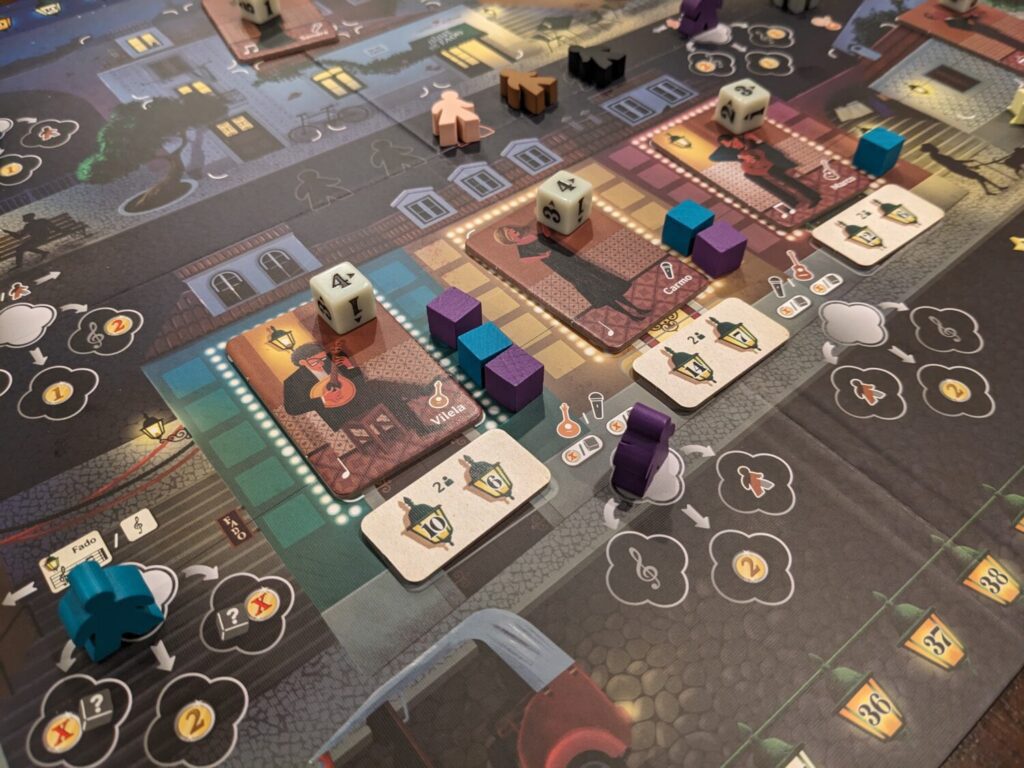
Man, That Critic is Cheap
House of Fado is a 1-4 player worker placement game that plays in 30-60 minutes. Over a series of rounds, players will hire new musicians for their restaurant, attract customers and food critics, write and perform new music, and promote artists using billboard ads. Occasionally, players will need to close their business for the evening, giving customers a chance to pay for their meals and to celebrate the performers. When three milestones (star tokens) have been claimed, play ends and points are tallied.
Across three plays for this review—one play each at one, two, and three players—my games always ended in less than an hour. Gameplay certainly has hints of The Gallerist, with “bumped-out actions”, artists that become superstars when they reach a certain fame level, and a money mechanic that can best be described as “exceptionally tight” in the early game before becoming so luxurious that players are usually swimming in cash.
And like The Gallerist, House of Fado nails its particular theme: managing a restaurant looks and feels fantastic, with superb illustrations from Portuguese artist Marina Costa and player boards that all feature the same scene but with different musicians. The first player token is one of my favorites of 2025: a Portuguese 12-string guitar. I especially love the fact that players can attract customers who come to see different types of artists, or they can bring in a food critic who shows up to improve the reputation of a player’s restaurant, knowing that the critic definitely won’t be paying for their meal.
So, I appreciated the change in setting from The Gallerist, even though the original still remains my favorite Lacerda design in terms of its theme. And no one has an issue with a strategy game that wraps up as quickly as House of Fado.
My main issues here stem from the game’s arc—across three plays, games have always played out the same way. That has left each game feeling a bit more mechanical than The Gallerist, which gives me the feeling that I won’t be reaching for House of Fado very often.
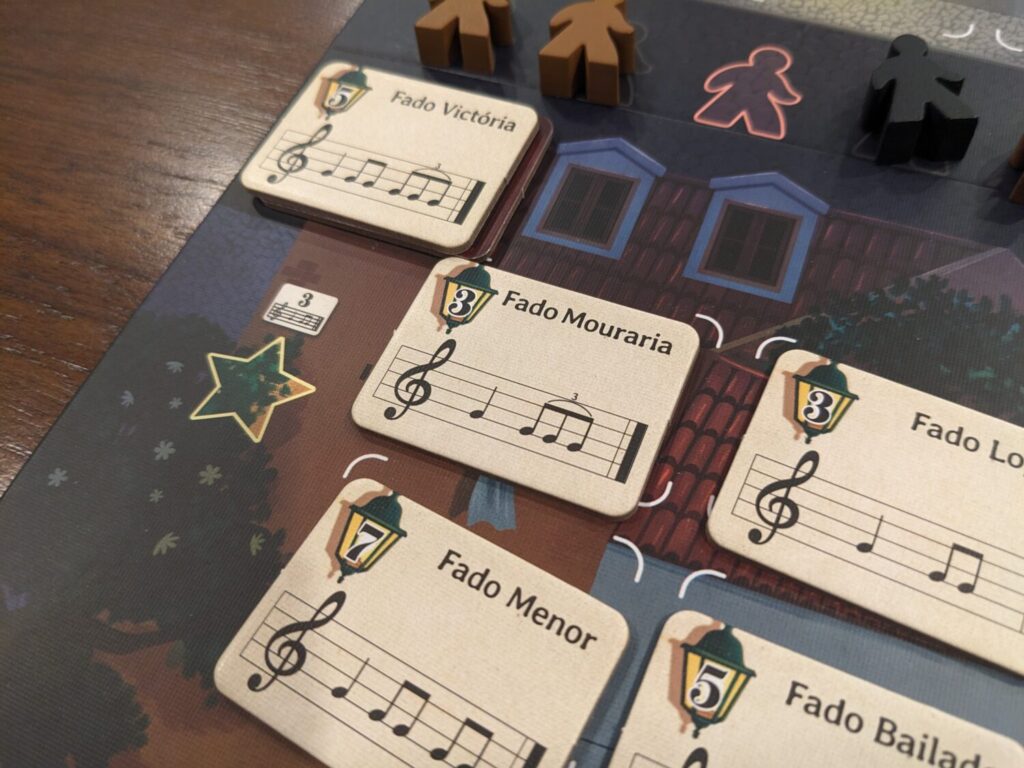
You’re Taking the Critic or “The Grays”
In each of my plays of House of Fado, there was always a race for critics, because there is one less critic in the market than the number of players. Critics are important as players drive towards the reputation track milestone, which is unlocked when a player moves all of the cubes on that track off their board. In addition, there are three types of customers: brown (guitar fans), black (fans of singers), and gray (generic lovers of artists of all kinds). Gray customers are strictly better than the other two groups because they can help boost the fame level of both guitarists and singers.
So, if there’s a batch of gray customers in the market, everyone is going for those. When players reach the halfway point of their reputation track, they expand their restaurant and can seat more customers. As soon as that happens, everyone’s bank account explodes because they are both making more money per customer and closing their restaurant with more customers at each table. During a player’s second, and definitely third, closing action, they were always flush with cash.
This means that the level of tension in House of Fado is minimal. Players are usually doing the action that appears to be most logical in the moment as they react to the board. In The Gallerist, each player has just one pawn but a series of other workers that can be used to take those bumped-out actions. In House of Fado, each player has three workers to use across seven action spaces on the main board and a personal space for closing their restaurant. That means that the very tight tension provided by having just four action spaces in The Gallerist is gone here.
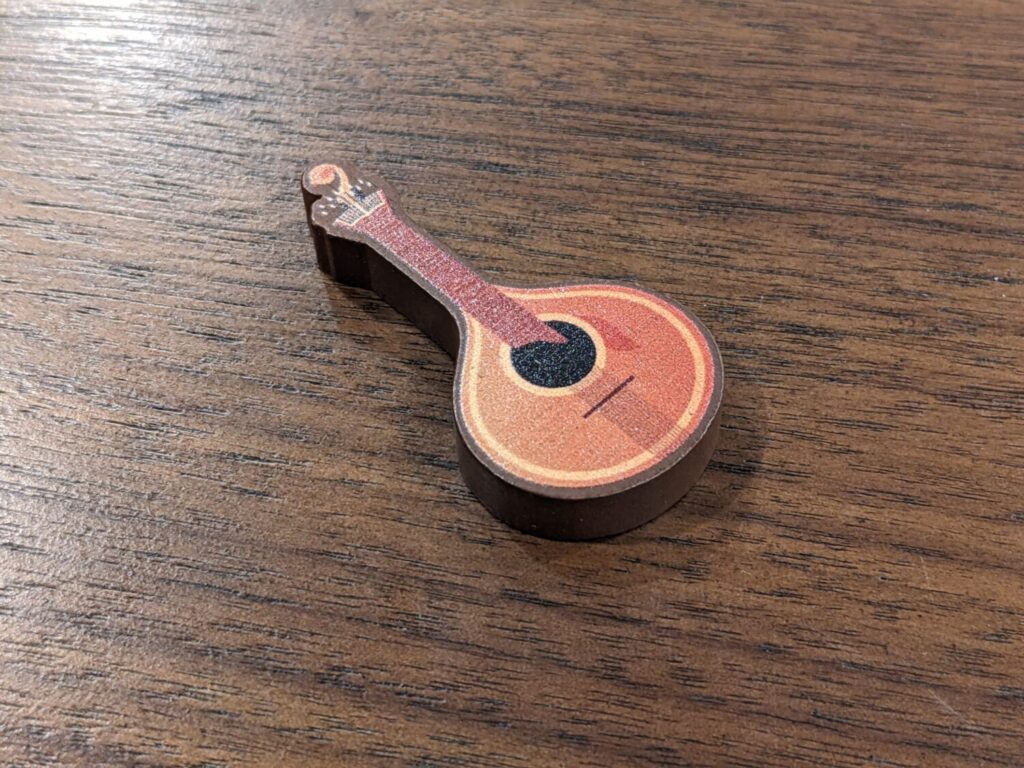
Usually, there’s enough meaningful work to do between restaurant closings. Getting bumped usually offers a small cash reward, or maybe a chance to cheat ahead on finishing their third song (“fado”) before other players can claim that milestone.
And because the rules dictate that a worker on a space cannot return to do that same action on successive turns, players are forced to move around. When a player has three musicians in their restaurant, they are more likely to just continuously boost the fame level of those tiles while grabbing new customers to rinse and repeat.
This left House of Fado in a very determined family-weight gaming space. Strategy gamers wanted a little more meat on the bone, while my wife appreciated that House of Fado fit as a 40-minute exercise after a long Friday at work. Solo wasn’t interesting, but it was very easy to administer. I wouldn’t buy House of Fado to only play solo, but I appreciate that it is here to help new players learn how to teach the game’s mechanics to other players.
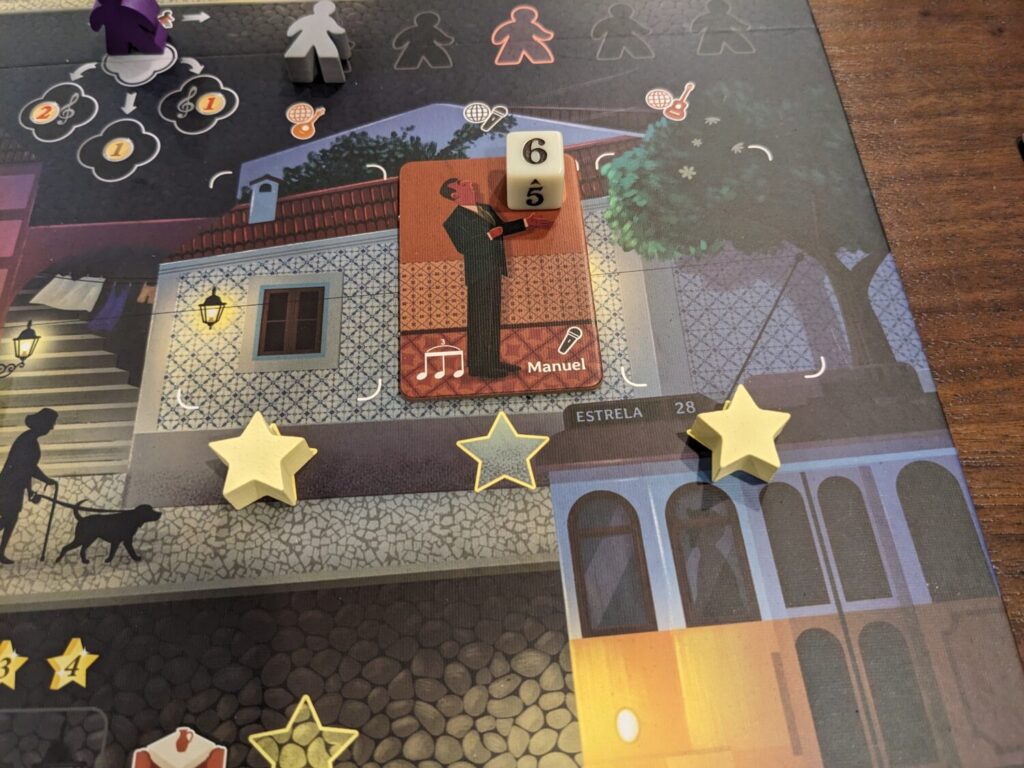
Lacerda for a Non-Lacerda Player
House of Fado disappointed those who knew The Gallerist. Seasoned players of the original design (which turned ten years old in 2025!) know that they can work through a full play of The Gallerist with two players in about an hour, and that hour provides a very satisfying, medium- to medium-heavy strategy game experience. Most of the gamers in my network know the base game, and I haven’t seen a game of The Gallerist even with four players last longer than 30 minutes per player.
Where I think House of Fado might shine brightest is with players who don’t know The Gallerist, particularly those who are looking to show off worker placement mechanics to newer gamers. The bumped-out bonuses are very friendly and keep all players very engaged between turns. While I think the variety in actions hurts the game’s long-term appeal, House of Fado should land nicely for players who want a friendly, less-interactive race to score the most points in a game that can be taught very quickly.
And no matter who the audience is, everyone loves the production. The game’s insert makes setup and teardown a snap, and Costa’s artwork is gorgeous. (The cover image really pops.) Seeking out answers to the questions created by the occasional edge case was very easy with the included rulebook, and while there are no player aids—remember, every game needs a player aid—the iconography didn’t get in the way and became quite easy to pick up after even my first game.
House of Fado isn’t bad. I had high expectations, but now I have a few friends in mind who I will offer my copy to try. And this offers more suggestions for my wife and I whenever we can stack up enough pennies to make a trip to Portugal, so I can see a trio performing in a restaurant for myself!


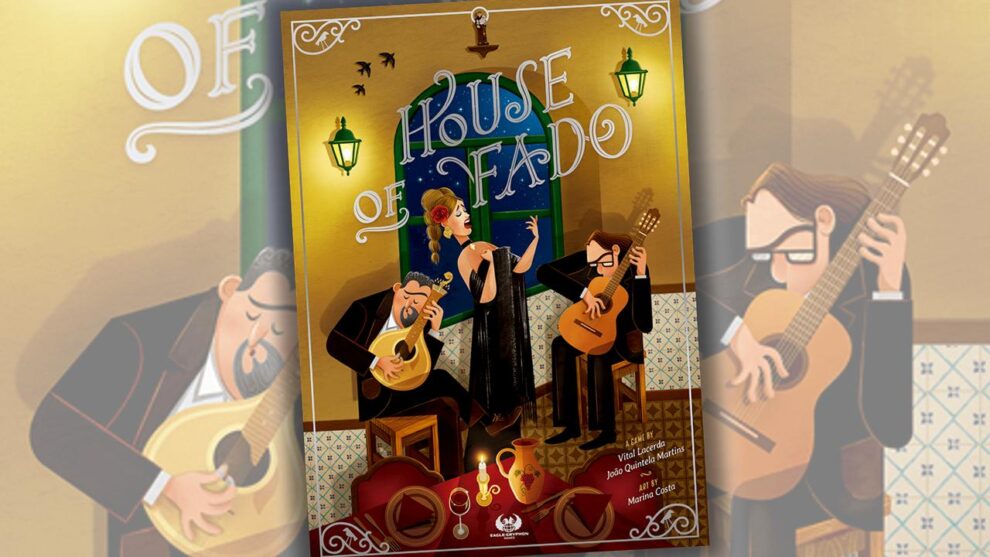










Having played Gallerist and HoF, your experience largely mirrors mine. Not bad, but kind of predictable and had me wanting to play Gallerist instead.